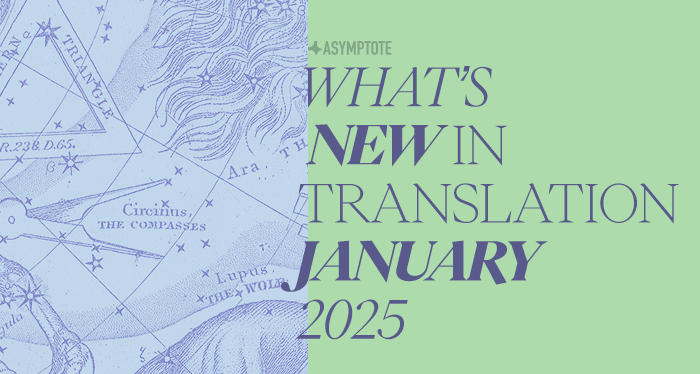In the first month of 2025, the offerings of world literature are as rich as ever. To help you on your year of reading, here are ten titles we’re most excited about—a new translation of a stargazing Greek classic; the latest from China’s most lauded avant-gardist; a rediscovered Chilean novel of queer love and revolution; a soaring, urgent compilation of Palestinian voices; surrealism and absurdism from an Italian short story master—and many more.
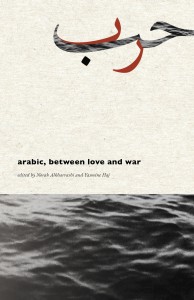
Arabic, Between Love and War, edited by Norah Alkharashi and Yasmine Haj, Trace Press, 2025
Review by Alex Tan
Addressing itself to the subtle but immense interstice between the Arabic words for ‘love’ and ‘war’, which differ by only one letter, Trace Press’s community-centric poetry anthology is as much a testament to beauty and survival under the conditions of catastrophe as it is a refusal to perform or fetishize suffering for a white gaze. The bilingual collection is, further, an intergenerational gathering of voices: canonical luminaries like Fadwa Tuqan are assembled alongside contemporary lodestars like George Abraham.
Throughout the volume, language gives in to its fecundity, at times carried by a voice that “condenses history to the depths of silence”, at others seeded within a word that “alone was enough to wither a tree”. The whispered syllable, across utterance and inscription, temporarily suspends the cruelties of the real: “I love calling you habibi / because then I feel as though they haven’t destroyed our cities.” In shared intimacy, an interregnum emerges, fragile as the stroke of an ر.
But how far can one measure the ruin and the specter of love in sentences? “I write rose and mean nothing,” the poet Qasim Saudi ventures, as if refuting the possibility of romanticism. The surveying ego can also be a trap—“my I wounding me”. Many of the writers here disclose a longing for dissolution, for blunting the edges of the self so that a liquid, collective consciousness might emerge in its stead. In Lena Khalaf Tuffaha’s idiom, “you never saw it coming, this cleansing, / how we have become this ocean”. Nour Balousha’s plangent question echoes, “Who told the wind that we were leaves?”
If witnessing, in our era of mediatized genocide, constitutes “a kind of death”, what disavowals and effacements are possible beneath the petrified image? What solidarities can form, reverberating across Palestine, Sudan, Syria, Iraq, and elsewhere? For Miled Faiza—in a poem dedicated to indigenous peoples dispossessed of their land—ghostly visitations compel the speaker to “walk in the trail of tears”. Threaded through the anthology are such kinships with the inanimate and the no-longer-human, nourishing a speculative desire for occluded pasts and wished-for futures.
Translation, as editors Norah Alkharashi and Yasmine Haj theorize, must itself be rethought: it might “no longer suffice in the process of decolonizing a mind, a body, and its lands”. Yet its necessity remains. This book reminds us, anew, that there are words and worlds to be unlearned and, in the process, remade.
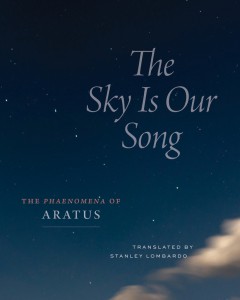
The Sky Is Our Song: The “Phaenomena” of Aratus, translated from the Greek by Stanley Lombardo, The University of Chicago Press, 2025
Review by Henry Gifford
Long ago, before neon signs and headlights, the sky was lit instead by stars. Birds and dung beetles used them as a means for navigation—and human beings then learned to do so as well. Aratus’s “Phaenomena,” republished here in a revised translation by Stanley Lombardo as The Sky Is Our Song, maps them out for us—the constellations extending from north pole to south in each sector of the sky. He gives us their names, describes how they look, and instructs us on where they can be found. With these instructions and the additional benefit of illustrations by Walter Michener (just detailed enough to aid our imagination), we begin to enter a knowledge that for most of us has been lost to technology and light pollution.
Aratus tracks the course of the stars for over the year, their “risings and settings,” then finally descends from the sky, passing down guidance for how to interpret the movements and colors of clouds, animals, plants and seeds, even candles. It’s a unified worldview, in which all these signs point to a Stoic philosophy and way of life that might allow us to, as Lombardo’s brilliant introduction explains, “Look for storms when the skies are clear / and for calm during stormy weather.”
It’s enough to make you nostalgic, but Aratus has beaten you there; the “Phaenomena” is already the product of a fallen race. The Golden Age is past, he tells us. The Maiden (Virgo) was once a woman named Justice, but seeing the warfare brought by trade and seafarers, she ascended to the sky. The building of the ships initiated the age of bloodshed. Thus one wonders whether the Macedonian court poet had perhaps resented his task, as this work is actually a version of a scientific text (originally written by Eudoxus) that seems, above all, to be a guide for sailors.
Yet despite much of the text being pragmatic, it is never tedious for long. When the poet is allowed to work, he does so beautifully in Lombardo’s translation: most of the constellations follow the same paths, but Boötes “loosens his oxen” while the Kneeler “dives headfirst into darkness”; the Hare is “bright-eyed” while the Arrow is “star-fletched.” Lombardo’s verse, which he describes as anapestic but is more loosely accentual, is propulsive enough to make for a lively read. It reflects and points toward the cyclical but ever-changing stars and seasons, and a universal view of nature not quite forgotten.
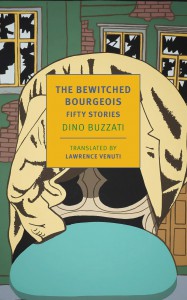
The Bewitched Bourgeois: Fifty Stories, by Dino Buzzati, translated from the Italian by Lawrence Venuti, New York Review Books, 2025
Review by Jordan Silversmith
The Bewitched Bourgeois is a collection of fifty short stories by the masterful Dino Buzzati, exploring the absurdities of modern life with a unique blend of satire, surrealism, and philosophical depth. Best known for his novel The Tartar Steppe, Buzzati here demonstrates his ability to craft compact narratives that twist the mundane into the extraordinary and back again, often with unsettling clarity and a singular logic.
Originally published in Italian newspapers during Buzzati’s long career as a journalist, these stories are deeply reflective of their context—but in the way of a warped mirror or a receding wave. In “Panic at La Scala,” a darkly comic rumor spirals into a collective frenzy during an opera performance, exposing societal fragilities and fractures. Similarly, “Seven Floors” charts the inexorable decline of a man in a hospital organized by degrees of illness, wherein each floor descends increasingly into fatal inevitabilities. The meticulous logic of these stories mirrors the bureaucratic absurdities of Buzzati’s world of post-war Italy, even as their conclusions unmoor us from the rational.
The stories also explore grander existential themes, as in “The Seven Messengers,” in which a prince embarks on a journey across his father’s kingdom, only to find that he may never reach the borders. The subtle tension here between agency and cosmic indifference permeates the entire collection, yet Buzzati’s prose maintains a lightness, even joy, that belies the weight of his concerns. His characters are trapped in paradoxical situations where the rules seem clear—until they don’t. As such, the stories come to seemingly inevitable climaxes, yet they still manage to surprise. Their mastery lies in Buzzati’s ability to magnify life’s small absurdities until they reveal profound truths about human nature.
Lawrence Venuti’s translation deftly conveys Buzzati’s cosmopolitan wit and enigmatic tone. The choice to retain French phrases in “Panic at La Scala,” for example, enriches the narrative, while his unembellished English sharpens the dissonance between Buzzati’s surreal scenarios and their stark realities. A gift in the vein of Calvino or Kafka, this collection solidifies Buzzati’s place as one of the twentieth century’s most inventive storytellers.
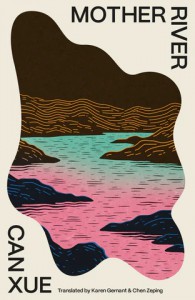
Mother River by Can Xue, translated from Chinese by Karen Gernant and Chen Zeping, Open Letter, 2025
Review by Christopher Higgs
The thirteen stories in Can Xue’s new collection are a feat of imagination. From a cyclops with one leg shorter than the other (“At the Edge of the Marsh”), to glowing poisonous skies that transform human bodies (“Smog City”), to cosmic waves that alter perception (“Love in Xishuangbanna”), to stones growing out of the ground and out of bodies (“Stone Village”), to mysterious mushrooms overtaking a soccer field (“Something To Do With Poetry”). . . even when we think we have a grip on what’s happening, the narrative slips through our fingers. Indeed, nothing short of a knowledge of Chinese narrative tradition can fully prepare English-language readers for the radically defamiliarizing experience of engaging with contemporary China’s most lauded avant-garde fiction writer. It’s not enough to simply call Can Xue’s work “experimental,” as critics often do to avoid the more difficult task of trying to engage with something so strange—but as Matthew Salesses points out in his much-discussed book, Craft in the Real World: “Experimentalism is experimental with regard to a specific tradition.”
European storytelling, rooted in Aristotelian conventions, will produce certain conditions whereby one might “experiment” in a particular way, while other cultures will produce different conditions. Salesses emphasizes this point through a discussion of Ming Dong Gu’s Chinese Theories of Fiction, a text that outlines ten important distinctions between Chinese and Western narrative traditions. Four distinctions made in that book that can directly help readers engage with Can Xue’s work are: “Chinese fiction comes from street talk and gossip, not the epic or the romance”; “the fantastic is a part of the everyday world”; “multiple conflicting points of view”; and “episodic structure.” The final story in this mesmerizing new collection (and the longest story by far), “Love in Xishuangbanna,” offers readers an example of all four of those distinctions. Characters interact with the natural and the celestial worlds as if everything in existence spoke the same language, from rivers and weather to stars and eclipses, from living people and animals to ghosts and spirits. Things happen, but not necessarily because of causation, and often without explanation. Resolution, by the end, feels unnecessary. Life becomes so much larger and more significant after reading the tale, for one is left with the distinct feeling that every element of existence seems connected rather than isolated; we are all closer than we might imagine.
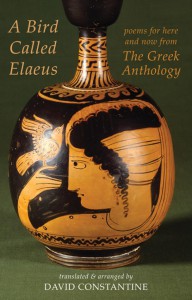
A Bird Called Elaeus: Poems for Here and Now from The Greek Anthology, translated from the Greek by David Constantine, Bloodaxe Books, 2025
Review by Jordan Silversmith
Spanning over 1500 years and encompassing 4500 poems by 300 authors, the Greek Anthology is a vivid tapestry of human experience, blending love, life, labor, and loss in an elegant, canonical patrimony. In A Bird Called Elaeus, David Constantine’s delicate and evocative distillation of this monumental text, heritage is approached with reverence and ingenuity, shaping his slim but rich selections into a deeply resonant and contemporary work.
A Bird Called Elaeus gathers poems that range from brief epitaphs to miniature epics, each alive with the texture of experience. As Constantine notes in his preface, these poems are not mere artifacts; they engage directly with the concerns of our modern world. Drawing connections between the works and the ecological crises of our era, Constantine takes certain liberties, sometimes expanding or fusing texts, even composing original poems inspired by their ancient counterparts. The result is a collection that feels both timeless and urgent, tethered to the sixth-century world of its origins, yet fully attuned to today’s existential perils.
Constantine’s translations are fluid and unpretentious, capturing the stark realism that Bertolt Brecht had admired in the Greek Anthology. With his background as a translator of Hölderlin, he embraces a methodology that combines fidelity with an openness to creative adaptation, and the result is a luminous English, balancing the formal beauty of elegiac couplets with an informal, natural cadence. This clarity is evident in Anyte of Tegea’s plaintive couplet—poem 538 of the original:
Alive this Manes was a slave but is
Dead as powerful as great Darius.
The emperor and the slave do not differ in death, and in that brief space, the poem transforms the boundaries of status and mortality into a meditation on equality. Elsewhere, Constantine introduces Leonidas of Tarentum’s vision of a lion seeking shelter in a goatherd’s fold—a tableau of unexpected mercy and coexistence that speaks across millennia.
The Greek Anthology is a “marvelous salvage from the vast shipwreck of the Ancient World,” as Constantine describes it. In A Bird Called Elaeus, this salvage is renewed, offering readers a poignant reminder of what connects us across culture, language, and time.
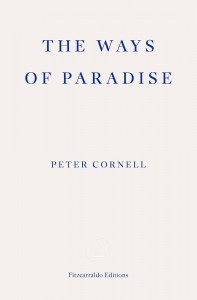
The Ways of Paradise: Notes from a Lost Manuscript, by Peter Cornell, translated from the Swedish by Saskia Vogel, Fitzcarraldo, 2025
Review by Jordan Silversmith
A labyrinth of poetic fragments, cultural divagations, and philosophical musings, Peter Cornell’s The Ways of Paradise takes the form of an imagined critical apparatus for a lost manuscript, written by the author’s “only student and friend.” The text is composed of numbered sections that supposedly constitute the creational process and intellectual architecture of this mystic work, inviting readers to think of absence and interpretation as central elements of reading.
This structure offers an intricate interplay between the real and the speculative. Cornell weaves in references to historical figures, mythological symbols, and arcane texts—from Freud’s analysis of forgetting to Nerval’s mystical travels—drawing the reader into a spiraling exploration of meaning. The effect is not coherence but suggestion; the “ways” of paradise multiply, becoming not a destination but a hermeneutic journey. Cornell seems to suggest that this journey is as much about the process of questioning as it is about the impossibility of approaching a singular truth—an approach that mirrors books of endless permutations like Mallarmé’s Livre.
Central to the work is the tension between presence and absence. The lost manuscript—purportedly a revelatory, generational project—becomes a metaphor for inconclusive artistic and intellectual ambitions. While the original manuscript’s vision of The Ways of Paradise remains unknowable, what emerges is the potential to construct new forms from what is left behind. In engaging with the book’s conceit, the reader speculates on the very nature of knowledge: is it the pursuit of understanding that defines us, rather than the answers we seek? Cornell’s labyrinth does not lead to resolution but invites reflection, making each reader a participant in the endless act of creation.
Saskia Vogel’s translation conveys the tone of Cornell’s fragmentary, speculative prose, preserving density while maintaining fluency. Her choices underscore the paradoxical nature of the original; its rigor lies in its refusal to yield definitive meaning, instead inviting readers to chart their own paths through the labyrinth of Cornell’s ideas. In this, The Ways of Paradise is less a conclusive map than a passage for readers to explore their own internal landscapes.
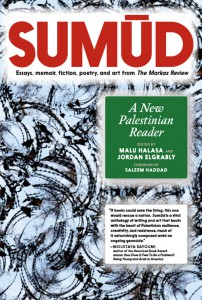
Sumūd: A New Palestinian Reader, edited by Malu Halasa and Jordan Elgrably, Seven Stories Press, 2025
Review by Henry Gifford
As I read the fifty-nine pieces in Sumūd: A New Palestinian Reader, one of the titles recurred to me, disturbing and clarifying, again and again: “They kill writers, don’t they?” Over the last eighty years, the crimes committed against Palestine and the Palestinian people have become terrifyingly ambient, but the authors and artists of Sumūd call them out again. They remind us of the orphans and bereaved parents, the destroyed homes, cultural centers, archaeological sites. They speak to the millennia of Palestinian history, the ever-receding present (the numbers, for instance, that are instantly out of date), and the future—not quite optimistically, but not without hope. Everywhere they document, analyze, and celebrate Palestinians’ unceasing resistance: sumūd, meaning “steadfastness. . . survivance. . . remembrance, record-keeping, and revitalization.” And if anyone doubts the value of this project—of writing—the answer is in that persistent question.
Israeli forces do kill writers, as Jordan Elgrably’s essay of this title recounts—from Ghassan Kanafani to Refaat Alareer, and many since then. And they have good reasons, which Sumūd lays out both explicitly and implicitly, by showing what writing can do. At this point, the purpose of eradicating Palestinian voices is not to hide the crimes either beyond and within Israel’s expanding borders; there’s hardly the need or effort to do that now, as awareness continues to grow with no evident effect on the course of events. The agenda may have once been intended to deny the existence of Palestine and Palestinians, but this strategy has already succeeded, as Ivar Ekeland and Sara Roy argue in their essay, “Disrupting the Colonial Gaze: Gaza and Israel after October 7.” Still, the killing continues.
These ready explanations are insufficient. To kill writers, then—as Sumūd shows us—is to kill the language of Palestine. The notion of speechlessness recurs throughout the collection: the sense of “not having the words” to grieve or to live with (a phenomenon that Eman Quotah’s review of Fady Souah’s […] examines). Several authors point to the tension between Israeli and Palestinian languages: “Israel” vs. “the occupation” or “Judea and Samaria” vs. “the West Bank,” to name the least subtle examples. Part of what has made this genocide unusual is the baldness of its intent. It was being justified before it had even begun; the murder and its language are inextricable. A new language is then required to resist it, and thus substantiates the longstanding importance of poetry in Palestinian culture, which constitutes the centerpieces of Sumūd. Poetry is where words and grammatical structures are most free and therefore most potent. Ahmad Almallah’s “Beirut,” which mixes English and Arabic, puts it best, framing his language as remedy, remembrance and resistance: “Just give me a few days to be immersed completely in everything Arabic and I’ll start spitting words like broken teeth.”
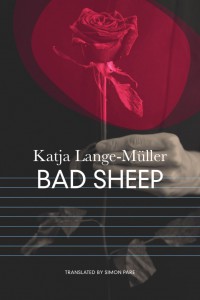
Bad Sheep by Katja Lange-Müller, translated from the German by Simon Pare, Seagull Books, 2025
Review by Henry Gifford
Two years before the distinction was erased, Soya Edith Krüger crossed from East to West Germany; a year or so later, Harry (also Krüger, though yet unrelated) is released from Tegel Prison. They meet on the streets of West Berlin, a city that seems to Soya like a “halfway house” for all its citizens, but literally is such for Henry. He’s a compulsorily—and therefore half-heartedly—recovering “junkie,” and though a romance comes quickly and thrillingly, it’s just as quickly transformed into a legally enforceable support system. Soya takes Harry in and enlists (bribes, begs) everyone in her new life to keep a round-the-clock eye on him and to report his progress to his parole officer–cum-sponsor. Thus her friends, ex-boyfriend, and colleagues all become minders for a man who has no regard for anyone, and who keeps one more secret that could collapse her whole life.
We learn all this from Soya, who is writing to Henry some years later. Her mind is subsumed by him—she shares only a few details of her childhood and mentions a marriage after her relationship with Harry, and even those are relative afterthoughts. If we’re to understand her as an individual, it can only be through the way she thinks, and thus we are made to see that she’s above all a person looking intently for answers. She has a tendency to describe what things are not (“neither tired nor alert, neither heavy nor light”), dissatisfied with ready explanations (“none of those adjectives is quite right”), and specifying metaphors to the point of uselessness (she cries like a hose with “four leaks,” one for each eye and nostril). It’s occasionally tiring—for her too—and particularly so in the case of Harry, who remains inaccessible despite all her searching. Her perplexity may reflect her political situation: a stranger in a familiar land, her own past lost first behind the Berlin wall and then to its fall. He is technically her countryman, and they even share a name, but the wall between them is more resilient than concrete.
The translation is at its best in the selections extracted from Harry’s notebook. Harry is instantaneously impressive, a plausible and exciting angry young man. His voice, as Pare translates it, is vicious and colloquial (my favorite example is the truncated cliché “let the cat out”). It’s obvious why Soya is prepared to do anything for him, even more so as the novel progresses, and moments of heartbreaking weakness slip through. What’s not obvious to her, for all her vision, is the notebook’s omission: her name isn’t mentioned once in them. But to us that too is clear enough; he can’t say a good word about anyone, and doesn’t have a bad word to say about her.
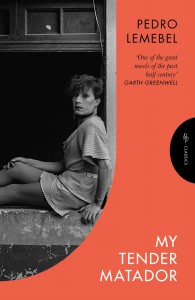
My Tender Matador by Pedro Lemebel, translated from the Spanish by Katherine Silver, Pushkin Press, 2025
Review by Xiao Yue Shan
Most of us would say that unrequited love is a state of torture, but in Pedro Lemebel’s My Tender Matador, a tumultuous and mostly one-sided infatuation is instead a thrill of efflorescence, indulgence, and celebration. Taking place in 1986, in the last throes of Chile’s ruthless dictatorship under Augusto Pinochet, Lemebel’s prose unfurls with glorious melody via his protagonist, the Queen of the Corner, an aging loca who falls in love with a mysterious young militant who goes by Carlos. Loca, defined by Lemebel, is the author’s preferred term over trans or queer; the most direct contemporary translation would be queen, but the loca is someone who is representative of both sexual fluidity and proletarian status. It is the proud label of someone who stands not only against hetero- and homonormativity, but also neoliberal ideology.
Lemebel’s style is a wonder: operatic heights, kaleidoscope evocations, and the passionate momentum of iconic power ballads. In Katherine Silver’s shining translation of My Tender Matador, this exuberance is immediately resonant of the queer capacity to weave hedonistic joy, beauty, and pleasure from the tatters of a rotting world—to carve out enclaves of unabashed self-expression amidst brutality. The Queen decorates “the walls like a wedding cake, populating the cornices with birds, fans, flowering vines, and lace mantillas draped over the invisible piano.” She throws a lavish party with hot chocolate and cake, inviting all the impoverished neighbourhood children. She dances flamenco in a wide-brimmed yellow hat with polka-dot ribbon. . . To be rejected by the world without letting one’s presence wane—that’s what it means to believe in beauty.
With the arrival of Carlos in her life, the Queen’s house is soon turned into a surreptitious meeting-place, concealing boxes upon boxes of sensitive materials for the resistance movement. Not much for politics but seduced by the young radical’s handsome and gentle appearance, the Queen keeps an open-door policy for Carlos and his companions, falling deeper and deeper with every encounter. Eventually, the two grow closer, and something stronger than friendship even begins to spark. Instead of a love story, however, Lemebel is interested in crafting a form that is more suited to desire—the inhuman vastness of it, the generosity and electricity. By repeatedly edging into the Queen’s fantasies before snatching her mind back to the impossible nature of her love, My Tender Matador creates a wondrous, layered rendering of wanting: the plasticity of the world as it molds around our yearnings, the endless potentialities that wishing unlocks within us.
Because yes, My Tender Matador is a fiercely political work. Even without explicit correlation, the Queen’s desire is mirrored in everything around her: in the stifled existence of her fellow locas, in the poor of Santiago, in the young partisans that pass through her front door. Held in the cruel grip of Pinochet, a country that has suffered over a decade of oppression is beginning to re-diagnose its hope. Lemebel gives the dictator and his wife their own deeply unflattering portraits, and the contrast drawn with the Queen is poignantly telling: those who defend themselves from the world become hollow, while those who throw themselves into it will always find more reasons to love being alive.
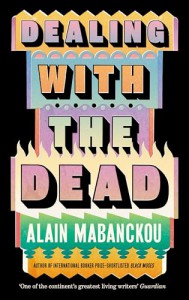
Dealing with the Dead, by Alain Mabanckou, translated from the French by Helen Stevenson, Serpent’s Tail, 2025
Review by Jordan Silversmith
In Dealing with the Dead, Alain Mabanckou leads readers in an enigmatic dialogue between life and death, deftly blurring the boundaries of physical existence with a metaphysical journey. Echoing the biting humor and dark satire of his award-winning Black Moses, here Mabanckou deepens his exploration of the human condition’s absurdities and profundities—this time through the eyes of a man returning from the grave.
The protagonist, Liwa Ekimakingaï, awakens in a cemetery. He is resurrected and disoriented, engulfed by fragmented memories, restless phantoms, a yearning to reconnect with the life he left behind. As Liwa stumbles through this surreal existence, Mabanckou masterfully uses comedy to navigate our uncertain conceptions of the afterlife, presenting the cemetery as a zone teeming with oddities and nostalgia. This setting becomes a distorted mirror of Pointe-Noire itself, where tradition, history, and societal absurdities collide. Mabanckou paints these scenes with a rich, layered irony; a cemetery bursts into a chaotic reflection of quotidian life, much like the orphanage and convent in Black Moses, which redefined freedom within the confines of control.
Mabanckou’s prose, rendered beautifully in Helen Stevenson’s translation, retains its characteristic lyricism and earthy vitality. Stevenson captures the cadence of Congolese French, the cultural idioms and shifting tonalities that give Liwa’s bewildering journey its vivid and vivifying texture. Through episodic encounters—including Liwa’s struggle to navigate the cemetery’s paths in an inverted world—Liwa embodies the collective disorientation of a society still grappling with its haunted history. There is an elegant balance between the comedic and the tragic; Liwa’s adventure ironizes and wryly references the picaresque tradition of Don Quijote, The Adventures of Roderick Random, and The Posthumous Memoirs of Brás Cubas—yet an undercurrent of unspoken loneliness lingers, like the cheap perfume that he wears.
Through Mabanckou’s playful yet poignant lens, death is reimagined not as a final state, but as an extended, elliptical conversation—by turns hilarious and heartrending—about everything unfinished, everything left unsaid, everything that ends and begins again.
Henry Gifford is a freelance copy editor and translator.
Christopher Higgs lives in Los Angeles. He teaches narrative theory and technique at California State University Northridge, and he still loves his first novel, The Complete Works of Marvin K. Mooney (2010, Sator Press/Two Dollar Radio).
Jordan Silversmith is the author of Redshift, Blueshift, winner of the 2020 Gival Press Novel Prize, and his poem has “Praxis” received the 2020 Slippery Elm Prize in Poetry. He regularly writes on literature in translation.
Xiao Yue Shan is a writer, editor, and translator. shellyshan.com
Alex Tan is a writer in New York. They’ve been assistant managing editor at Asymptote Journal for three years, where they frequently review Arabic literature in translation. Other essays have been published in Words Without Borders, The Markaz Review, ArabLit, and Full Stop Quarterly; some of these writings can be found at https://linktr.ee/alif.ta
*****
Read more on the Asymptote blog:

